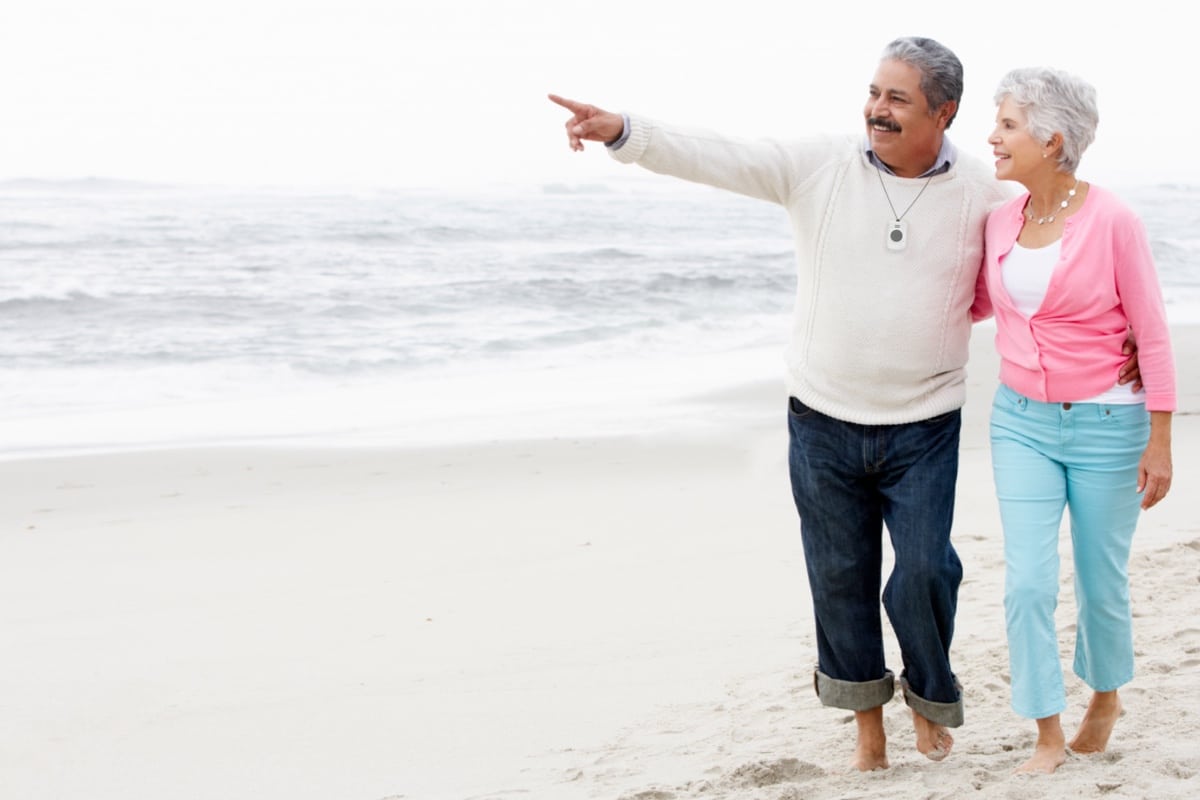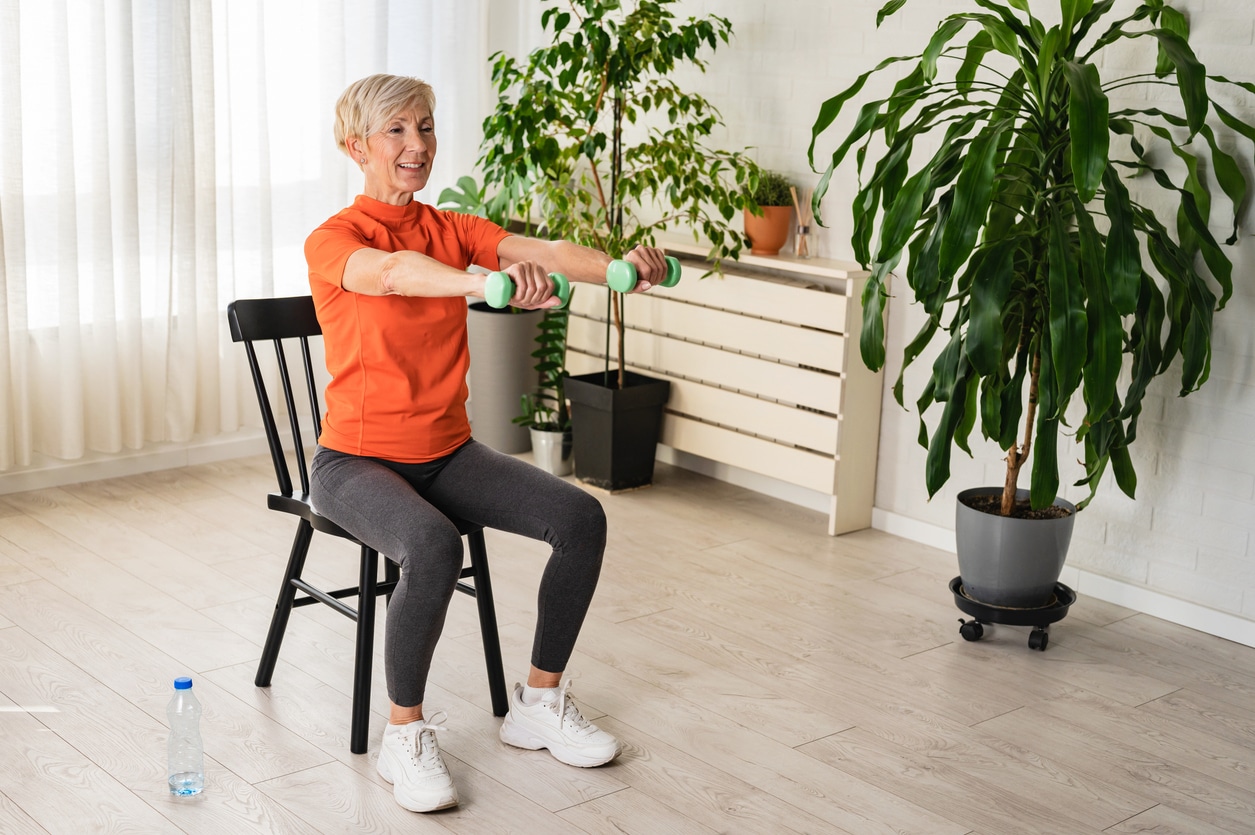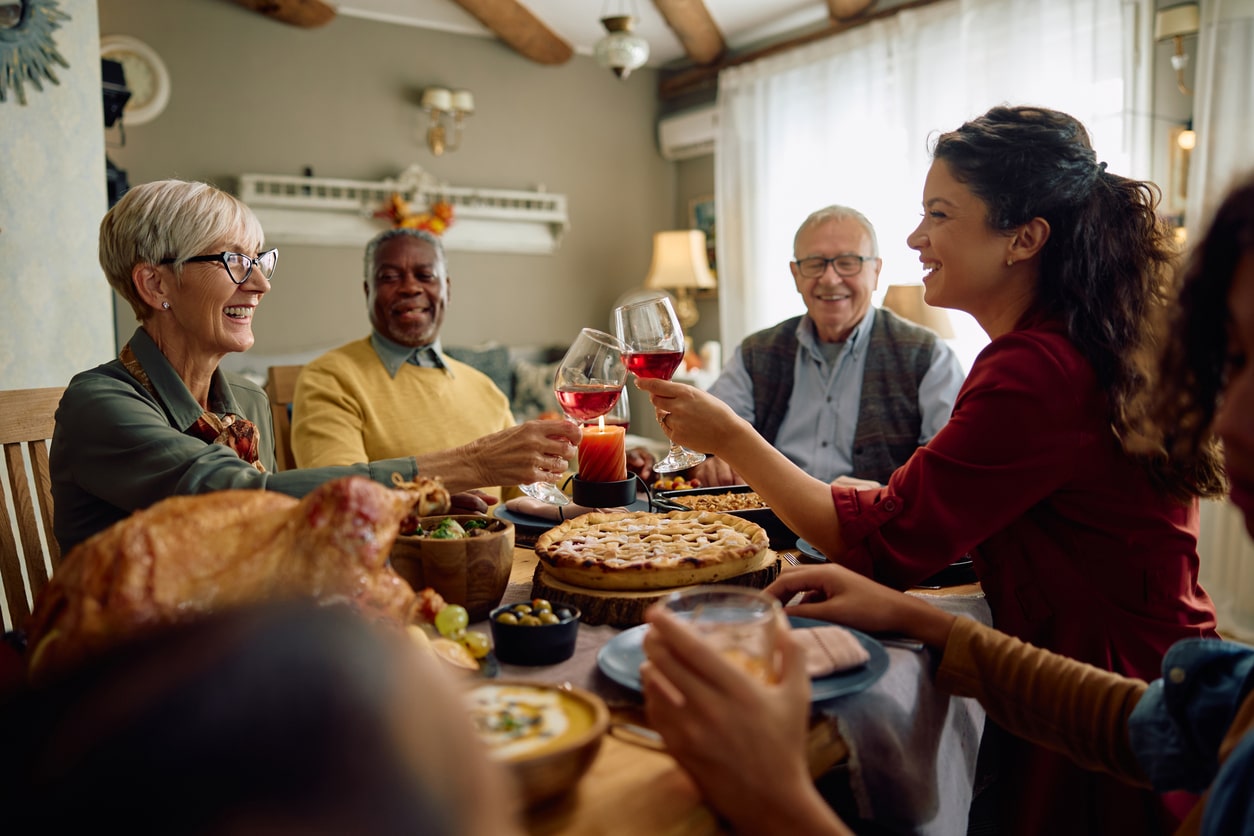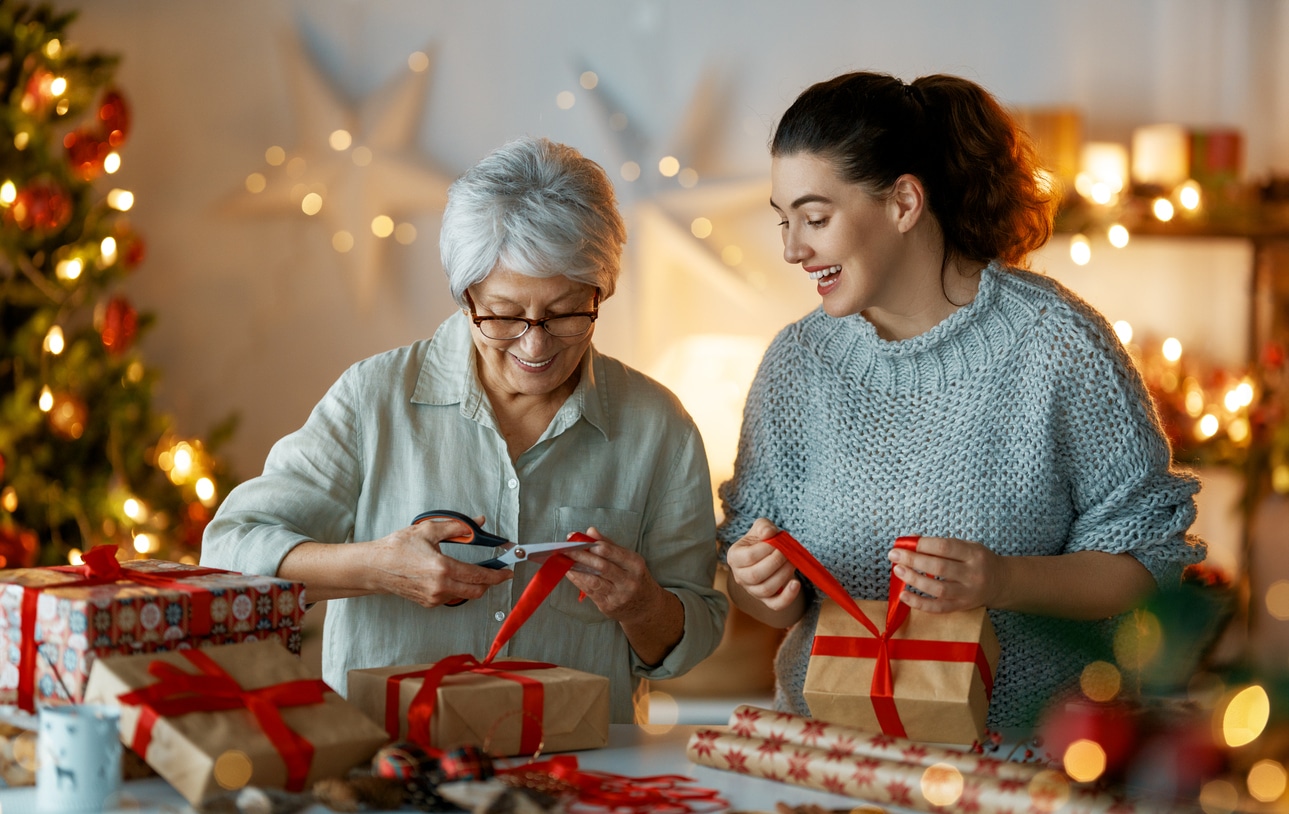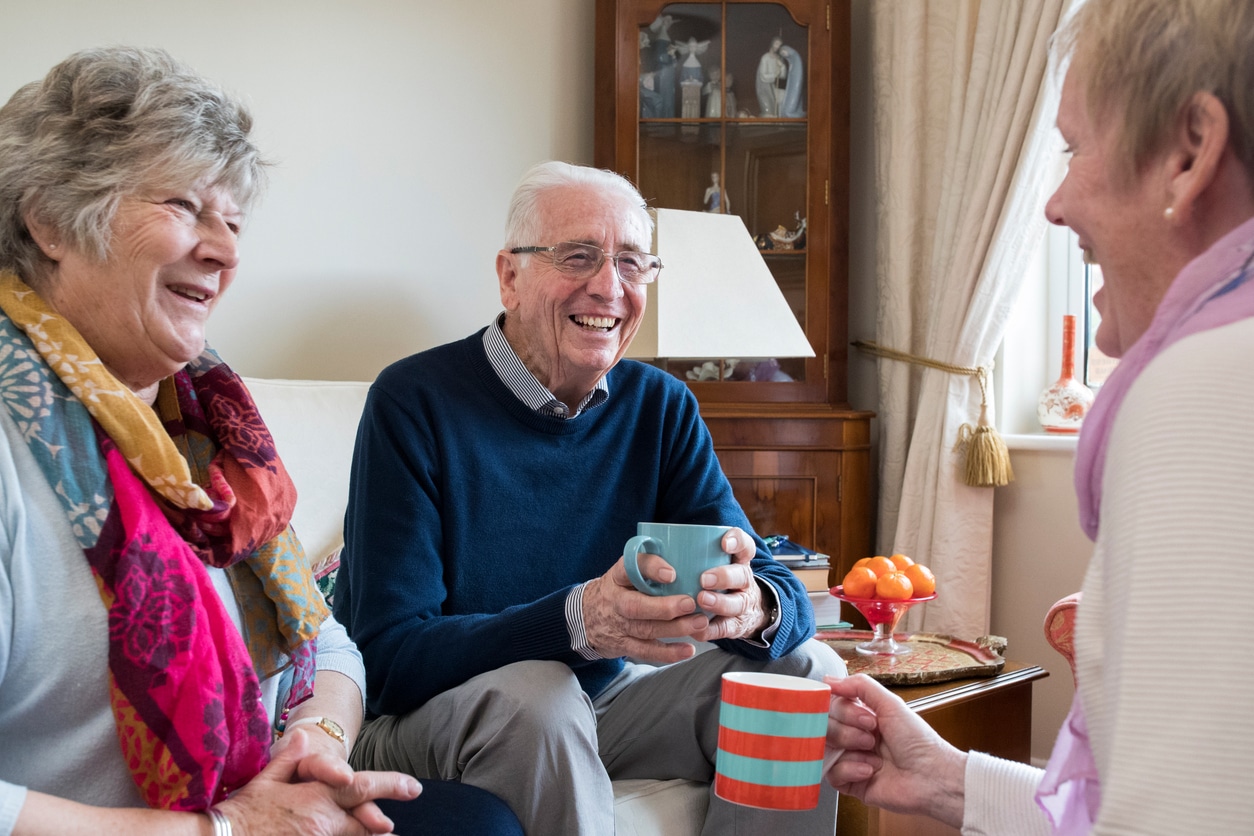Our activity levels often increase with the temperature. In the summer months, we’re all eager to be more active and to make the most of those extra minutes of day light.
As we age, though, our ability to deal effectively with the heat changes, and often in ways we don’t notice day to day. That’s why we compiled this summer health information for seniors.
Heat Stroke Safety
When the weather’s nice, we want to be out there. But seniors are more prone to heat stroke (also called sun stroke or hyperthermia) when the weather is hot. That’s because they don’t sense when they’re thirsty and so have trouble staying hydrated.
There are two types of heat stroke:
Classic heat stroke
“Classic heat stroke is a passive response to prolonged exposure to hot ambient conditions, often with high humidity,” explains Matthew Kuennen, assistant professor in the High Point University Department of Exercise Science. “It’s more common in the very young and very old, as they have less gain – or responsiveness – in their thermoregulatory response.” This is a fancy way of saying that when our body’s ability to cool itself off is limited, we may not sense how hot we actually are until we’re in trouble.
Exertional heat stroke
Exertional heat stroke is an active response to working or exercising in a hot and/or humid environment. “Unlike classic heat stroke, this one is more likely to affect young or highly active individuals,” Kuennen says.
Heat stroke’s symptoms include:
- Nausea
- Disorientation
- Severe headache
- Dry, hot and flushed skin
Heat stroke is a true emergency, and people experiencing heat stroke are incapable of treating themselves. Call 9-1-1 immediately if you or a companion shows symptoms.
Falls, Breaks and Sprains Prevention
Popular summer activities like hiking, walking on the beach or chasing after our grandchildren can lead to falls and injuries, even in the most sure-footed active adults. Not surprisingly, hip and wrist fractures/breaks and ankle sprains are frequent during the summer months.
Besides wearing sturdy shoes and watching where we’re stepping, we need to develop strong core muscles, improve balance and increase flexibility. Yoga and other range of motion exercises help us stay nimble and steady on our feet, while resistance exercises like weightlifting enable us to build strength in that all-important core.
Increasing body and spatial awareness also helps. “Movement enhances our proprioception – the sense of our body in space – [and forms] a connection to our own sensations in the body,” explains Chicago movement and dance therapist Erica Hornthal. “Practice a mindful body scan in the morning to assess and evaluate how you’re feeling physically and emotionally. This will give you a baseline when moving throughout your day so you don’t over do it.”
Cardiac Care for Seniors
Take extra care this summer if you’ve got a cardiac condition, or are at high risk for one. The heat, coupled with your desire to be more active and potential for dehydration, may put you at higher risk for a heart attack.
Older adults with metabolic or cardio-pulmonary issues should consult their physicians prior to beginning a regular summer exercise program Train Smart. And anyone experiencing the following symptoms needs immediate medical attention:
- Recurrent chest pain triggered by exertion
- Tingling or numbness in the shoulder
- Jaw pain, especially in older women
- Shortness of breath
- Extreme discomfort
- Weakness
- Dizziness, lightheadedness
- Fainting or near fainting
As if that’s not enough, seniors with known cardiac conditions are 29% more likely to fall and require a trip to the emergency room. That makes protecting our hearts from overexertion and other triggers even more important.
Burn Prevention & Safety
“As we get older, our skin becomes thinner, which creates quite a problem, especially for seniors,” explains Ernest Grant, program manager for outreach and education at the North Carolina Jaycee Burn Center in Chapel Hill. “The things that the skin does for the body – protection, lubrication, etc. – begin to fail.”
Preventing & Treating Sunburn
Remember that senior skin is more sensitive to the sun and burns easily. “The most important aspect of sunscreen is that it is at least an SPF 30, and that the label says broad UVA and UVB protection, as the SPF number only refers to the UVB protection,” says board certified dermatologist Rhonda Klein, with Connecticut Dermatology Group. “Do not tan or burn, wear lots of sunscreen – and reapply every 2-3 hours – and wear photoprotective clothing, and hats!”
Grant reminds us that “Even seniors of color should apply sunblock, especially when the temps get up above 90 degrees.”
Wear sunglasses to protect your delicate eyelid skin from harmful UV rays that can produce early signs of aging and even skin cancer, according to Victor Chung, director of La Jolla Facial Plastic Surgery in San Diego. Bonus: “With better visual acuity and shade from the bright sun, you have less eye strain and you squint less.”
And if you do get sunburned, Klein says to use emollients like aloe, “to moisturize the skin and replenish the skin barrier to prevent scarring and post-inflammatory hyperpigmentation.”
Preventing Grill & Campfire Burn
It’s not summer without cookouts and campfires, but these activities do carry risk.
The best way to avoid burns from open fires and grills is to keep a safe distance from the flame, and avoid putting flammable objects or accelerants into the fire.
“Maintain a distance of at least three feet from the fire,” Grant says. “Always have a bucket of water or sand available to put out the flames. Make certain that the fire is completely extinguished before leaving the campsite, and dousing all coals with water for a good minute or so.”
When cooking out, use approved utensils and a thick fire-resistant mitt. Keep dogs and kids away from the grate or grill, too.
Treating Burns
For small burns, Grant says to remove jewelry or constricting clothing. “Cover the burned area with a sterile dressing or clean, non-fluffy materials to protect it from infection,” Grant says. “Don’t use adhesive bandages that may stick to the effected area and make it worse. And don’t use butter, mustard or even lotions, ointments or creams!” If the pain persists, or if the burn is larger than the size of a quarter, visit your doctor or local emergency room.
For larger and deeper burns, call 9-1-1 immediately. If possible, remove clothing and jewelry and make the individual as comfortable as possible. Cover the burn with a clean dressing and await the arrival the EMS personnel. “Don’t administer any pain medications, even over the counter products with a large burn,” Grant says.
“When in doubt, see a doctor immediately,” Grant cautions. “Burn injuries are often permanent, so proper medical care from the beginning is critical.”
Fireworks & Sparkler Safety
Grant doesn’t want to rain on your patriotic spirit, but he’d prefer we didn’t use sparklers and fireworks at all, and instead leave this kind of revelry to the professionals.
And don’t be fooled thinking sparklers are less dangerous. “Sparklers throw off showers of hot sparks may have a temperature that exceeds 1,200 degrees Fahrenheit,” Grant notes. Think about all that heat inches from your hands. It’s no surprise, then, that the American Fire Protection Association estimates that 28% of fireworks-related emergency room visits were prompted by sparkler mishaps.
“The problem with the average consumer using fireworks and sparklers is that they don’t think of the safety factors: What to do if it goes errant, if it doesn’t light, if it starts a fire, or if someone is injured,” Grant laments. We’re also tempted to use these items after we’ve been drinking, which impairs our judgment and puts us at higher risk.
If you feel treasonous for not lighting up the night sky, make sure to take these steps to safeguard yourself and others:
- Have a cell phone in hand to call the fire department or the EMTs.
- Make sure your first-aid kit is properly stocked in case of injury.
- Keep a garden hose or buckets of water ready in case something catches on fire.
- Avoid using sparklers and fireworks near dried material like pine straw, or in or near wooden structures like homes, picnic shelter and out-buildings.
- Establish and enforce a safety perimeter to keep small children and pets away from the flames.
- Wait until after your sparkly celebration to toast our nation.
Keep in mind that fireworks and sparklers can agitate or confuse seniors with cognitive disorders or anxiety issues. The noise and intense light can trigger reactions like heighted vigilance, intrusive thoughts or flashbacks in some PTSD patients.
Summer fun is always on the agenda. Summer health should be, too. Use these summer health tips for seniors to ensure you have a safe and enjoyable season.
Don’t disregard professional medical advice, or delay seeking it, because of what you read here. This information is not intended as a substitute for professional consultation, diagnosis or treatment; it is provided “as is” without any representations or warranties, express or implied. Always consult a healthcare provider if you have specific questions about any medical matter, and seek professional attention immediately if you think you or someone in your care may be suffering from a healthcare condition.
